Meet The Line – 105 mile Megacity of the future
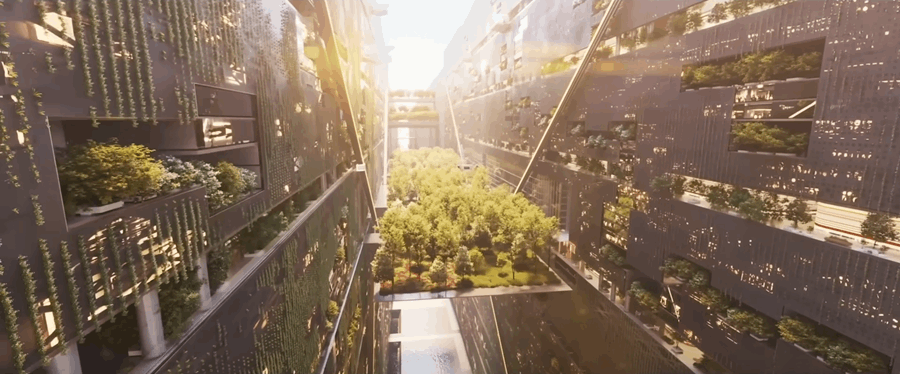
Picture a city without cars or roads, where everything you need is within a 5 minute walk, or a 20 minute high-speed electric train ride, a net zero city with no carbon emissions – that’s The Line. It’s a 170km long mirrored metropolis that will stretch across Saudi Arabia, an ambitious attempt at a modern utopia.
The Saudi Arabian government set a competition which brought together the world’s best architects to design a city for the future. It’s like playing SimCity in real life, but with a $500 billion budget (about US$55,000 per resident). Oh, and did we mention it’s supposed to be the greenest city ever?
It will be the single most extraordinary piece of work of the first quarter of the 21st century
Thom Mayne, founder Morphosis Architects
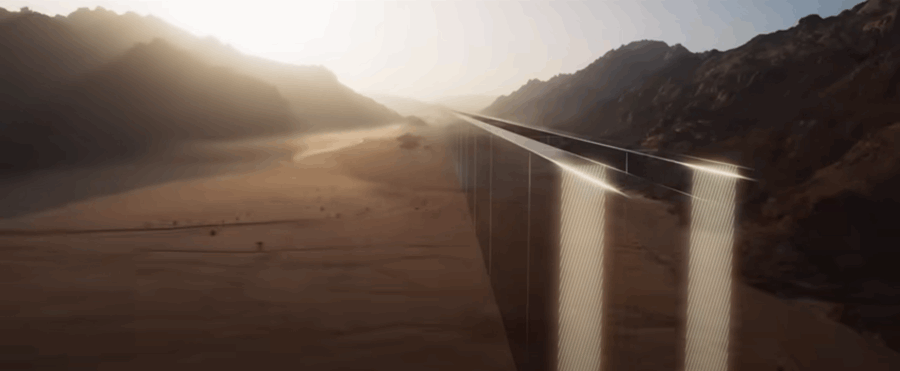
What is NEOM and what does NEOM mean?
The Line is to be part of NEOM. Neo means ‘new’ in Greek and the M stands for Mostaqbal which means “future” in Arabic. Neom is a new urban area planned by the Kingdom of Saudi Arabia to be built in its northwestern Tabuk Province. NEOM will include a floating industrial complex, global trade hub and futuristic tourist resorts.
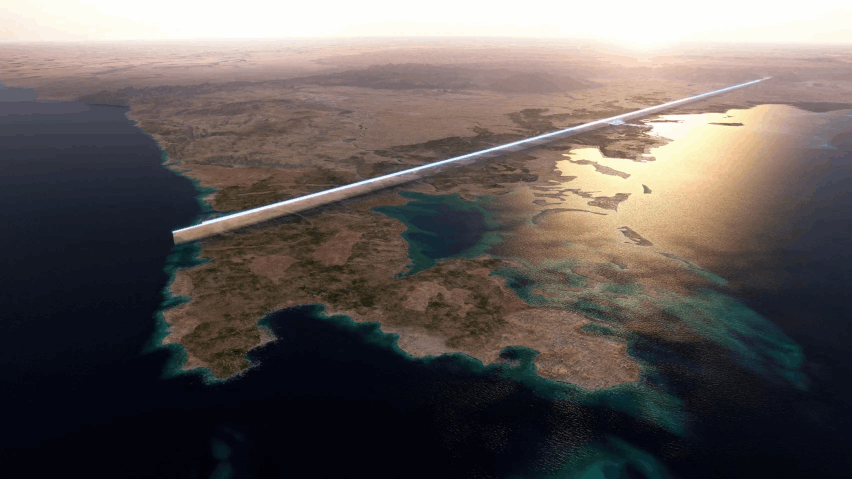
City of the future will house 9 million
The Line plans to preserve 95% of the natural surroundings. The north west of Saudi Arabia is largely untouched, a wild area with mountains, valleys, oasis’s, dunes, corals and desert landscapes. The new megacity aims to preserve this, with a reduced footprint on the land, as well as being 100% sustainable, powered by renewable energy; and no cars, a 5 minute walkable city.

The idea is to preserve the landscape by having the world’s smallest footprint. The megacity will be home to 9 million (the same as London), but will have a land footprint of just 34 km².
London: 1500km²
The Line: 34 km²
With two massive 500m mirrored buildings (separated by outdoor space), The Line will also be one of the tallest buildings in the world, at half a kilometer at it’s tallest point, about the same as the World Trade Centre.
The 500m vertical city will be car-free and carbon neutral. There are plans for recycled water projects with solar-powered desalination, vast wind gardens and green hydrogen power.
This is the world’s largest construction project, and has been compared to the Apollo moon landing project in terms of scale.
Nothing is impossible
Dr Giovanna Carnevali, Executive Director, Architecture and Style, NEOM
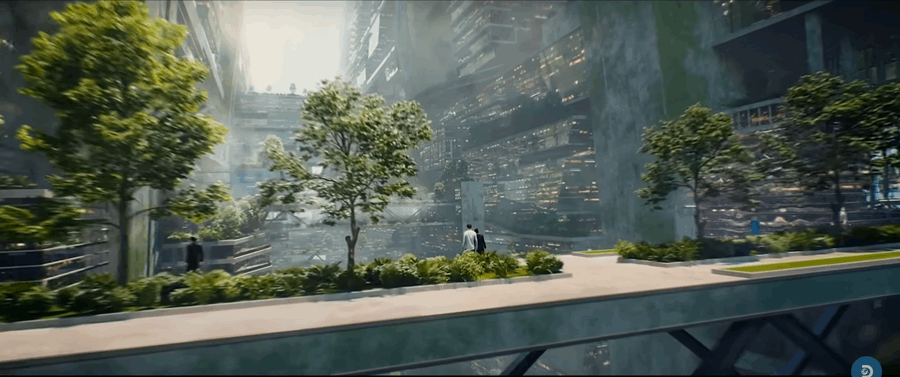
and one of Hollywood’s most prominent art directors, he worked on Guardians of the Galaxy, Harry Potter, Iron Man and Snowpiercer (let’s hope it doesn’t go that way!)
We think of the whole city as a piece of art
HRH Mohammed Bin Salman, Crown Prince of Saudi Arabia and Chairman of NEOM Board of Directors
Social equality, building communities, livable city
The focus is on livability. Each citizen will have 1,000 cubic metres of urban volume (in the UK, a worker is entitled to 11 cubic metres per person, a garage is about 40 cubic metres) .The Line is not just aimed at being a practical solution to crowded inefficient cities, but also has social ambitions; for people to live and work alongside each other regardless of their background and pushing equality for women.
“If it succeeds it will be the new Babylon.”
Sir Peter Cook RA, architect, lecturer, founder and partner Cook Haffner architecture platform
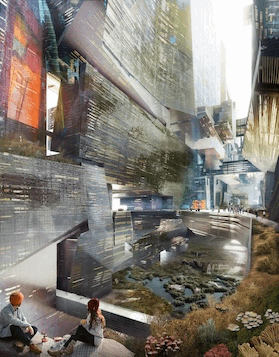
Tesla as an Example
Drawing parallels with Tesla, participating architect Thom Mayne urged architects to think beyond design aesthetics and focus on aspects like environmental considerations, mechanical efficiency, and overall performance.
Historical Vibes

The Line is like the architectural lovechild of Arturo Soria, Yona Friedman, and the avant-garde rebels of 1960s Italian design collective Superstudio. It’s a blast from the past, wrapped in a futuristic package.
The idea of a linear city is not a new one. Architects of The Line are taking inspiration from the 1800s and the 1960s. Designers such as Arturo Soria who proposed a linear city in 1882 (pictured above). The Spanish architect proposed a city with zones such as garden zone, farm zone, residential zone and so on which was later taken up by Soviet planners in the 1920s.
In the 1960s Yona Friedman, an avant-garde French architect proposed ‘Spatial City’ with modular units that could be repeated ad infinitum and Peter Cook designed a ‘Plug-In City’ with prefab units.
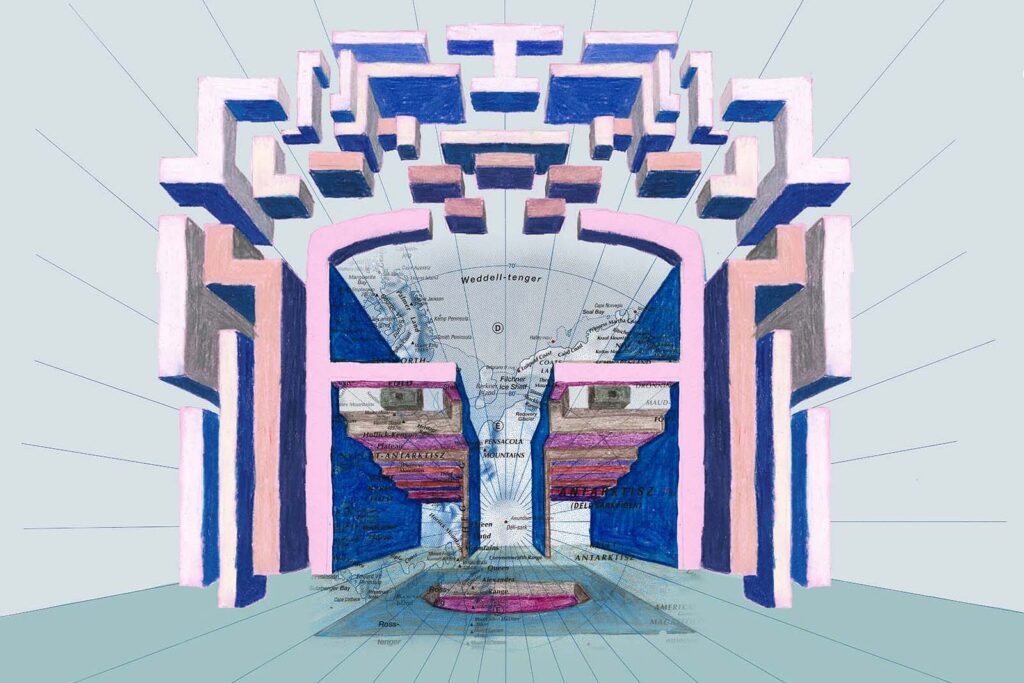
“We want to accelerate history”
Construction is already in full swing, with the first residents expected to move in by 2024. Fleets of bulldozers, diggers, cranes and trucks are already excavating its foundations. With 135 community-sections (each housing 80,000 people), each 800 meters long and 500 meters tall (the same as a 125 storey skyscraper), comprised of smaller modules, it’s like watching a massive real-life game of Tetris.
This will be a new way of living … we have the cash, we have the land … we want to create the new civilization for tomorrow and encourage other nations to do the same to make a better planet
HRH Mohammed Bin Salman, Crown Prince of Saudi Arabia and Chairman of NEOM Board of Directors
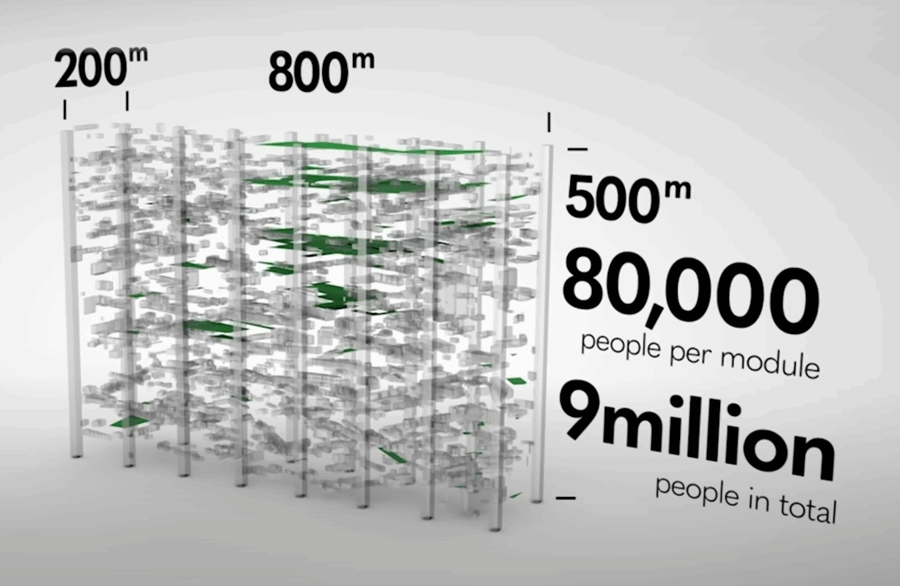
Building of The Line is already under way, with the first phase planned to be complete by 2030 in time for Vision 2030. NEOM plan to have over 1 million residents from around the world by 2030. The megaproject is designed to create 380,000 jobs and add over $50 billion to Saudi Arabia’s GDP.
What is Vision 2030?
Vision 2030 is Saudi Arabia’s plan to modernize the country and develop a sustainable economic model in the anticipation of the end of oil, on which it relies heavily for its income. Vision 2030 includes a series of futuristic megacities with costs estimated at 700 billion dollars, but some say it will add up to over a trillion dollars (Apollo 11 cost $152 billion in today’s money). Vision 2030 will coincide with the World Expo 2030 which is hosted in Saudi Arabia’s capital Riyadh.
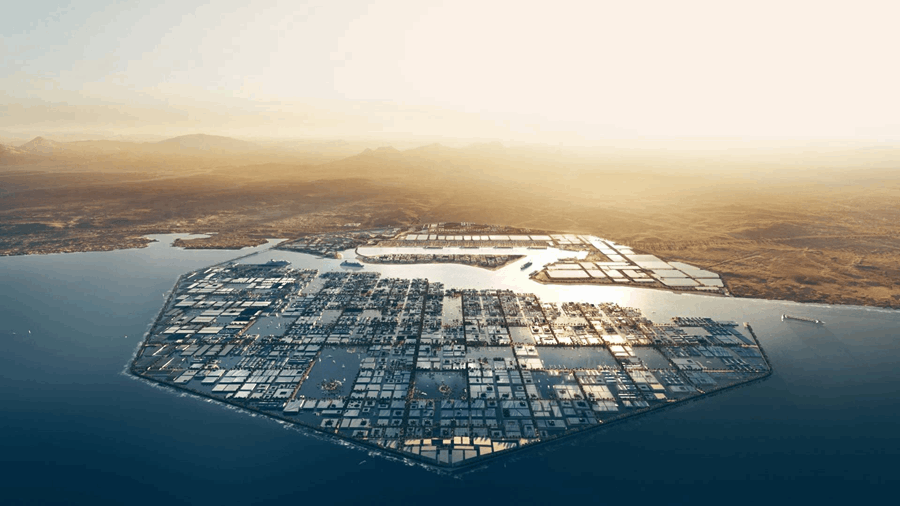
1 trillion dollars
Using back-of-the-envelope calculations, a former Neom planner estimated the new cities could cost $1 trillion to build, Bloomberg Businessweek MBS’s $500 Billion Desert Dream Just Keeps Getting Weirder
Architects Anonymous
Since 2017 development of The Line has been kept secret and has only recently been publicized. NEOM set a competition and, from a playing field of over 20 world-class firms, created a shortlist of 5 companies. Most firms proposed circular cities but Tarek Qaddumi, a civil engineer and former British army officer, now Executive Director of The Line, proposed a linear city which would result in a lower footprint.
The Line is attracting the best architects in the world but they are keeping mum with confidentiality agreements. Some of the biggest names in the world are working on this megacity, while reknowned architects like Norman Foster (The Gherkin/Reichstag/Natural History Museum) and Francine Houben (Martin Luther King Jr. Memorial Library) were originally on board but backed out due to human rights and ecological concerns.
The world’s biggest startup
Jacquie Hughes, Director, Department of Media and Creative Expression, NEOM
Reality Check
Some experts are skeptical about achieving the slick, futuristic aesthetic, while others are concerned about the 1.8 gigatonnes of CO2 and the potential bird collision hazard with mirrored exteriors. Some concerns have also been raised about the removal of indigenous tribes. It’s a mixed bag of excitement and eyebrow raises.
Philip Oldfield, who leads the built environment school at the University of New South Wales (UNSW), estimates that the construction materials for such a project will result in around 1.8 million tons of carbon emissions; more than many European countries produce in a year.
AI Overlords
Artificial intelligence will be the city’s watchful eye, using predictive models to make life better for its citizens. But wait, there’s more – residents get paid for handing over their data, raising potential privacy issues. Who knew your daily routine could be so profitable?
Watch the documentary
Useful links about The Line
The Line, Saudi Arabia – Wikipedia
8 key facts you should know about Saudi Arabia’s The Line – Parametric Architecture
Saudi Arabia Prince Unveils $500B Neom Mega City Project – Fortunes Crown






